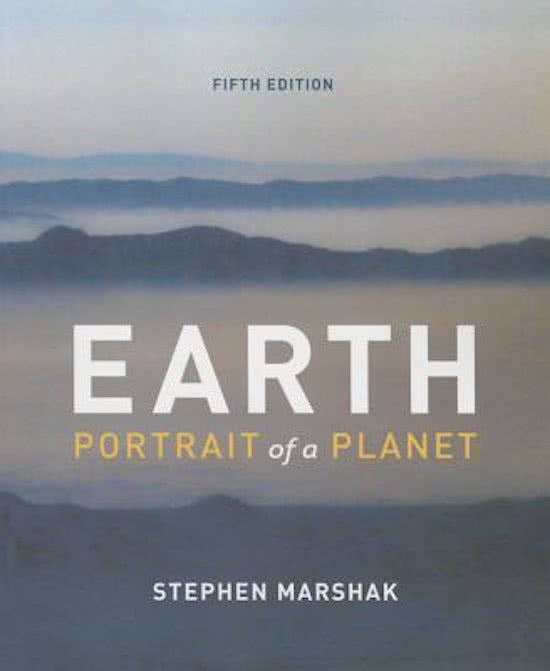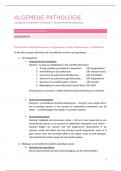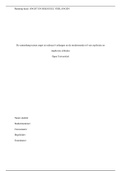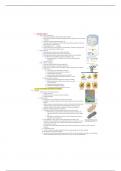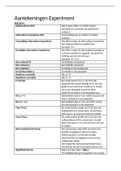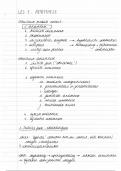Chapter 7 Sedimentary rocks
7.2 Classes of sedimentary rocks
We distinguish four classes of sedimentary rocks.
(1) Clastic sedimentary rock
Clasts, solid fragments and grains broken off pre-existing rock, cemented together.
(2) Biochemical sedimentary rock
Shells grown by organisms
(3) Organic sedimentary rock
Carbon-rich relicts of cellular material from plants or other organisms
(4) Chemical sedimentary rock
Minerals that precipitated directly from the surface-water solutions
Clastic sedimentary rock
Containing loose clasts1 or grains that have been stuck together to form a solid mass. The clasts can
consist of minerals such as quarts or flakes of clay minerals, or of chunks of rock. Production of a clastic
sedimentary rock involves five steps:
(1) Weathering – of pre-existing rock
(2) Erosion- the grains produces by weathering get separated from their original substrate by wind/water
or ice.
(3) Transportation- the grains produced by weathering and removed by erosion get transported by a
transporting medium (wind, water or ice). The ability of a medium to carry sediment depends on its
viscosity and velocity.
(4) Deposition – after transportation, the sediment falls out of the medium. Sediment settles out of the
medium when it slows down, or when it melts (ice).
(5) Lithification- transformation of loose sediment into solid rock
1. Compaction: Due to the pressure of overlying sediment, the water and air gets squeezed out and
clasts press together tightly.
2. Cementation: Minerals precipitate from groundwater and fill spaces between clasts.
Classifying clastic sedimentary rocks
-Clast size: diameter. Listed in order from coarsest of finest: boulder, cobble, pebble, sand, silt and clay.
Gravel = accumulation of pebbles and cobbles. Mud= accumulation of clay and fine silt. Clay = grains
less than 0.004 mm diameter.
-Clast composition: The largest clasts (pebbles or larger), consist of an aggregate of minerals. The smaller
clasts consist of individual minerals.
-Angularity and sphericity. Angularity indicates the degree to which clasts have smooth or angular corners
and edges. Sphericity refers to the degree to which a clast is equidimensional 2or resembles the shape of a
sphere.
As the amount of transport of a sediment increases, the sediment tends to become finer grained.
-Sorting: If transport sifts (zeven) grains, carrying smaller ones farther ad leaving coarser ones behind,
1 A clast is a fragment of geological detritus, chunks and smaller grains of rock broken off other rocks by
physical weathering. Geologists use the term clastic with reference to sedimentary rocks as well as to
particles in sediment transport whether in suspension or as bed load, and in sediment deposits.
2 Equidimensional is an adjective applied to objects that have nearly the same size or spread in multiple
directions.
, grains in a sediment tend to be the same size. If a sedimentary rock contains larger grains surrounded by
very small clasts, the small casts are called “matrix”.
- Sedimentary maturity: A less mature3 sediment consist of fragments of the original rock and contains
both resistant and nonresistant minerals, and is not well rounded.
-Character of cement
Clast size Clast character Rock name Origin
Coarse to very coarse Rounded pebbles and Conglomerate Rounded in a riverbed
(>2mm) cobbles
Angular clasts Breccia Large blocks tumble of
Large clasts in muddy a cliff
matrix Diamictite Debris flow/ Glacial till
(debris left behind as
glacial ice melt)
Medium to coarse Sand sized grains
(0.06-2mm) -Quartz gains only Quartz sandstone
-Quartz and feldspar Arkose
-Sand sized rock Lithic sandstone
fragments
-Sand and rock Wacke Deposits of submarine
fragments in a clay-rich avalanches
matrix
Fine (0.004-0.06 mm) Silt-sized clasts Siltstone
Very fine (<0.004) Clay and/or very fine Shale4 If it breaks into platy
silt sheets
Mudstone If it doesn’t break into
slay sheets
Biochemical sedimentary rocks
Numerous organisms have evolved the ability to extract dissolved ions from seawater to make solid
shells. If these organisms die, their shells accumulate and this material constitutes biochemical
sedimentary rock.
- Biochemical limestone
Rocks formed from shells of organisms made of calcium carbonate (CaCO 3). We can distinguish between
fossiliferous limestone (containing visible fossil shells or shell fragments), micrite (consisting only of
very fine carbonate mud) and chalk (consisting of plankton shells).
You do not always see the shells because they can be broken up by organisms before lithification, or
water can dissolve carbonate grains and form new carbonate grains (after lithification).
- Biochemical chert5
3 Mature= oudere
4 Shale = schalie, Slate= leisteen,
5 Chert= vuursteen
7.2 Classes of sedimentary rocks
We distinguish four classes of sedimentary rocks.
(1) Clastic sedimentary rock
Clasts, solid fragments and grains broken off pre-existing rock, cemented together.
(2) Biochemical sedimentary rock
Shells grown by organisms
(3) Organic sedimentary rock
Carbon-rich relicts of cellular material from plants or other organisms
(4) Chemical sedimentary rock
Minerals that precipitated directly from the surface-water solutions
Clastic sedimentary rock
Containing loose clasts1 or grains that have been stuck together to form a solid mass. The clasts can
consist of minerals such as quarts or flakes of clay minerals, or of chunks of rock. Production of a clastic
sedimentary rock involves five steps:
(1) Weathering – of pre-existing rock
(2) Erosion- the grains produces by weathering get separated from their original substrate by wind/water
or ice.
(3) Transportation- the grains produced by weathering and removed by erosion get transported by a
transporting medium (wind, water or ice). The ability of a medium to carry sediment depends on its
viscosity and velocity.
(4) Deposition – after transportation, the sediment falls out of the medium. Sediment settles out of the
medium when it slows down, or when it melts (ice).
(5) Lithification- transformation of loose sediment into solid rock
1. Compaction: Due to the pressure of overlying sediment, the water and air gets squeezed out and
clasts press together tightly.
2. Cementation: Minerals precipitate from groundwater and fill spaces between clasts.
Classifying clastic sedimentary rocks
-Clast size: diameter. Listed in order from coarsest of finest: boulder, cobble, pebble, sand, silt and clay.
Gravel = accumulation of pebbles and cobbles. Mud= accumulation of clay and fine silt. Clay = grains
less than 0.004 mm diameter.
-Clast composition: The largest clasts (pebbles or larger), consist of an aggregate of minerals. The smaller
clasts consist of individual minerals.
-Angularity and sphericity. Angularity indicates the degree to which clasts have smooth or angular corners
and edges. Sphericity refers to the degree to which a clast is equidimensional 2or resembles the shape of a
sphere.
As the amount of transport of a sediment increases, the sediment tends to become finer grained.
-Sorting: If transport sifts (zeven) grains, carrying smaller ones farther ad leaving coarser ones behind,
1 A clast is a fragment of geological detritus, chunks and smaller grains of rock broken off other rocks by
physical weathering. Geologists use the term clastic with reference to sedimentary rocks as well as to
particles in sediment transport whether in suspension or as bed load, and in sediment deposits.
2 Equidimensional is an adjective applied to objects that have nearly the same size or spread in multiple
directions.
, grains in a sediment tend to be the same size. If a sedimentary rock contains larger grains surrounded by
very small clasts, the small casts are called “matrix”.
- Sedimentary maturity: A less mature3 sediment consist of fragments of the original rock and contains
both resistant and nonresistant minerals, and is not well rounded.
-Character of cement
Clast size Clast character Rock name Origin
Coarse to very coarse Rounded pebbles and Conglomerate Rounded in a riverbed
(>2mm) cobbles
Angular clasts Breccia Large blocks tumble of
Large clasts in muddy a cliff
matrix Diamictite Debris flow/ Glacial till
(debris left behind as
glacial ice melt)
Medium to coarse Sand sized grains
(0.06-2mm) -Quartz gains only Quartz sandstone
-Quartz and feldspar Arkose
-Sand sized rock Lithic sandstone
fragments
-Sand and rock Wacke Deposits of submarine
fragments in a clay-rich avalanches
matrix
Fine (0.004-0.06 mm) Silt-sized clasts Siltstone
Very fine (<0.004) Clay and/or very fine Shale4 If it breaks into platy
silt sheets
Mudstone If it doesn’t break into
slay sheets
Biochemical sedimentary rocks
Numerous organisms have evolved the ability to extract dissolved ions from seawater to make solid
shells. If these organisms die, their shells accumulate and this material constitutes biochemical
sedimentary rock.
- Biochemical limestone
Rocks formed from shells of organisms made of calcium carbonate (CaCO 3). We can distinguish between
fossiliferous limestone (containing visible fossil shells or shell fragments), micrite (consisting only of
very fine carbonate mud) and chalk (consisting of plankton shells).
You do not always see the shells because they can be broken up by organisms before lithification, or
water can dissolve carbonate grains and form new carbonate grains (after lithification).
- Biochemical chert5
3 Mature= oudere
4 Shale = schalie, Slate= leisteen,
5 Chert= vuursteen

